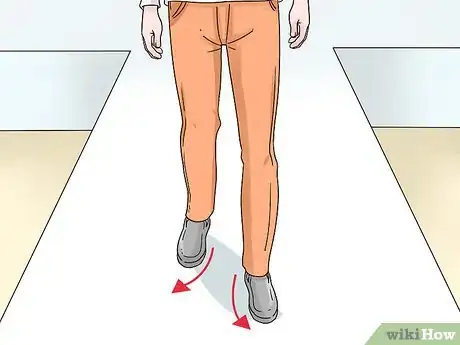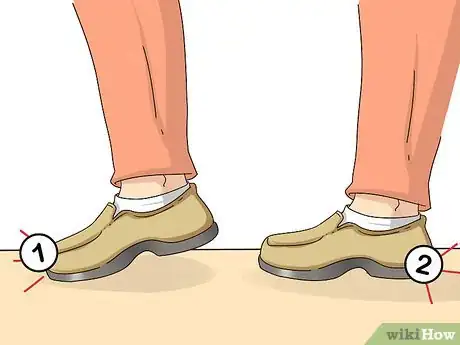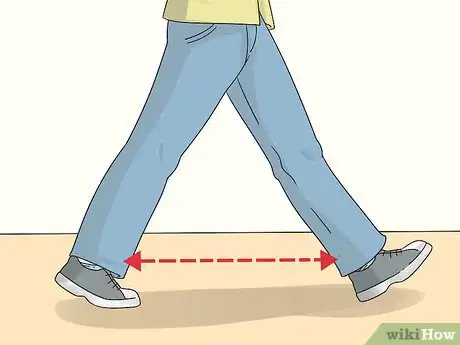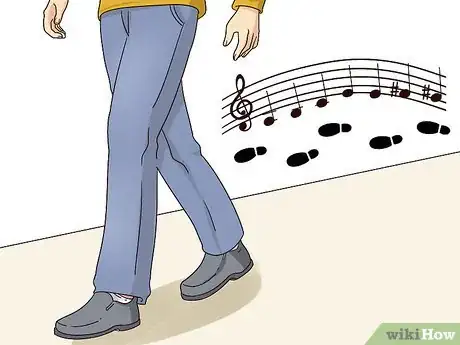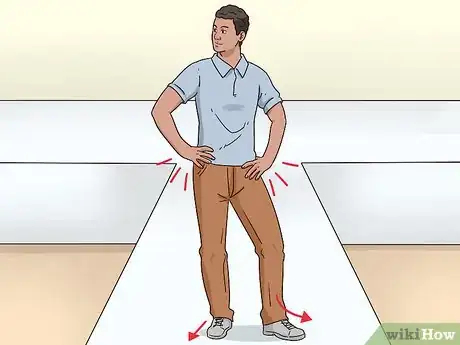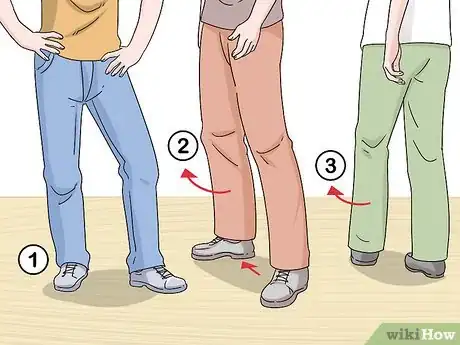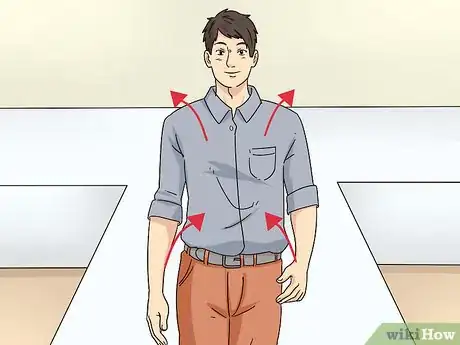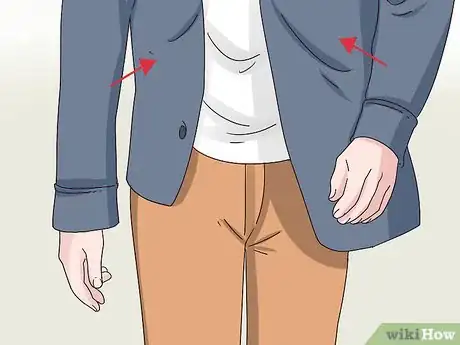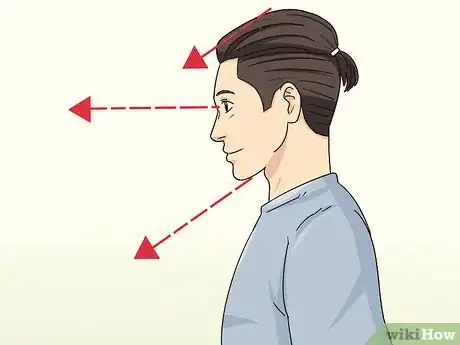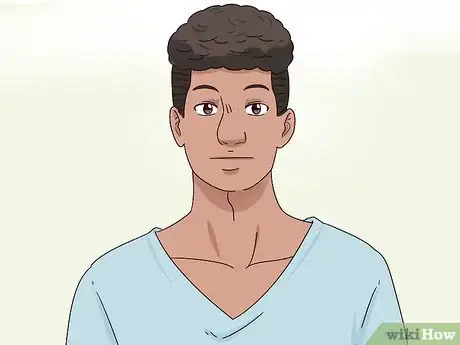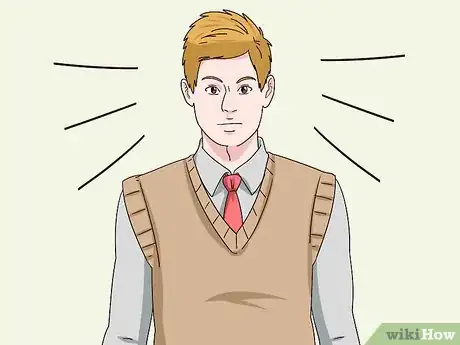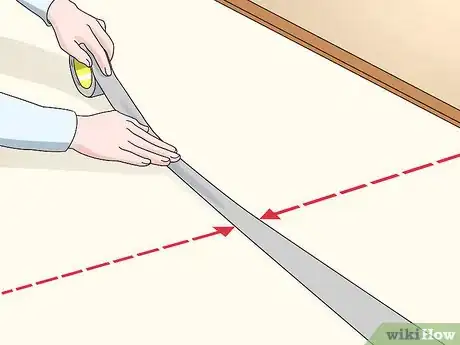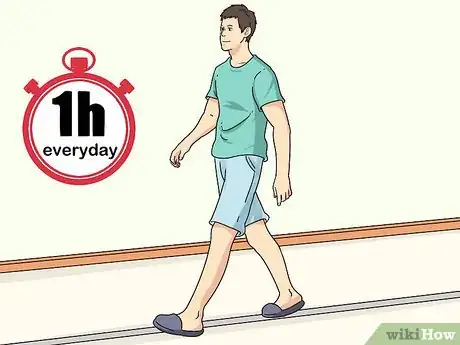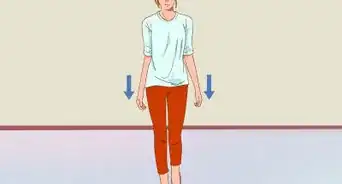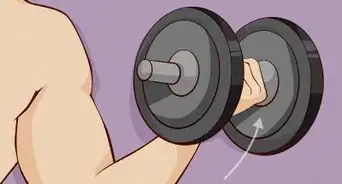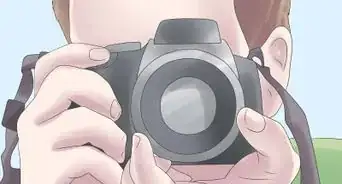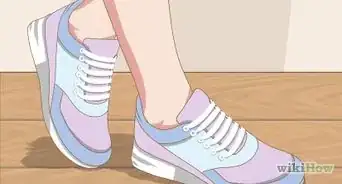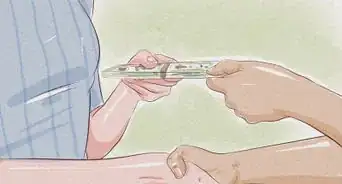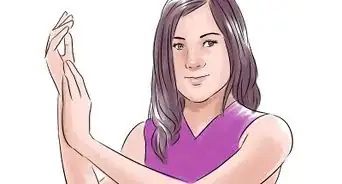This article was co-authored by Traci Halvorson. Traci Halvorson is a Modeling Agent, Former Model, and the Owner of Halvorson Model Management (HMM) in San Jose, California. HMM is a full-service, licensed talent agency representing over 300 professional models and actors. With over 25 years of experience in the modeling industry, Traci specializes in scouting, managing, advising, and launching modeling careers in the Bay Area. Traci holds a BA in Public Relations & Business Management from San Jose State University and also specializes in Marketing, Image consulting, and is a certified Life-Career Coach.
There are 7 references cited in this article, which can be found at the bottom of the page.
This article has been viewed 92,841 times.
Walking the runway is like an art form. Making changes to your normal stride might feel strange at first, so work on making your walk look natural. Posture is key, so keep your shoulders back and chest out. Keep your face in a neutral expression and, above all, do your best to project confidence. With some practice, you can perfect your walk and, hopefully, start booking gigs.
Steps
Striding with Confidence
-
1Walk with your toes facing slightly outward. As you stride, your feet shouldn’t cross over each other in an “X,” like women's feet do when they walk the runway. Instead, the classic male runway walk is a “V” formation, in which the toes point out slightly. Try not to point your toes out too much, or you might look like you’re waddling.[1]
- The “V” formation broadens the body, emphasizes the upper torso, and gives the strut a slight swing while preserving masculinity.
-
2Keep most of your weight on the balls of your feet. When your foot lands, try to place the ball of your foot down first, then land your heel. It might feel weird at first, but keep your weight balanced on the balls of your feet as you walk.[2]
- Keeping most of your weight on the balls of your will make your stride more elegant.
Advertisement -
3Take longer strides than you normally would. While your stride needs to be longer than your normal gait, you shouldn’t look awkward or like you’re on stilts. Practicing will help you make your stride longer but appear natural instead of clumsy.[3]
- Think of your runway walk like a cool stroll down the street.[4]
-
4Adjust your speed to match the music. As for the quickness of your step, let the music guide your tempo. Try to match your walk's rhythm to the beat of the music.[5]
- The music that accompanies fashion shows is usually chosen to help the models pace their walks.
-
5Pose for a three to five second count. At the end of the runway, pose with your hand on your hip, one leg out, and the other foot forward ready to pivot. Stand still for three to five seconds, then use your pivot foot to turn back for your return walk.[6]
- Your pose can vary, and you can work with your designer to create a pose that’s suitable for the show.
- If you nail your pose, photographers will have a better chance of getting a great shot that you can add to your portfolio.
-
6Turn by pivoting in a graceful, continuous motion. After you’ve posed, turn on the ball of your pivot foot as you pick up your other foot and reverse directions. As you pivot, your face should be the last part of body to turn away from the audience.[7]
- Try not to make a quick pivot as if you were doing a pirouette. Instead, try to make your pose, pivot, and turn in one continuous, fluid motion.
Mastering Posture and Expression
-
1Keep your shoulders back, chest out, and stomach in as you walk. Hold your shoulders back and keep them still, but not to the extreme that you seem robotic. Just try not to let them bounce up and down as you walk. In addition, keep your chest out and stomach in, so you appear broader and taller, which will emphasize your masculinity.[8]
-
2Let your arms sway naturally as you stride. Without letting them touch your sides, try to keep your arms close to your torso. That way, your lower arms will sway freely and naturally without swinging too wildly. Further, keep your hands and fingers relaxed, and don’t ball your hands or hold them in fists.[9]
- Try to keep your fingers naturally straight without overextending them. That way, you won’t look like you’re missing any fingers in photographs.
-
3Focus your eyes straight ahead. Find a focal point directly ahead and lock your eyes on it. Don’t shift your eyes around or look down at your feet. Your head should point slightly downward with your chin roughly parallel with the floor.[10]
- Depending on your designer’s instructions, you can look away from your focal point to make eye contact with the audience during your pose.
-
4Keep a natural, neutral facial expression. Unless your designer tells you to, don’t smile during your walk. Without locking or pursing them, keep your lips closed, relaxed, and natural. While your facial expression should be neutral, it should still convey confidence.[11]
-
5Project confidence as you walk. Confidence is key on the runway. As you walk, try thinking about how great you look. Tell yourself you’re the best looking person in the room and your posture and facial expression will reflect it.[12]
Perfecting Your Walk
-
1Watch runway shows to see how styles vary. Every runway model has their own style of walking and posing. Watching recorded runway shows will help you learn the basics and allow you to get a feel for how individual models develop their unique twists.[13]
- You can find plenty of relevant videos on YouTube by searching for “male model runway shows.”
-
2Set up a practice runway at home. A long hallway is the perfect place to practice your walk at home. Run a strip of masking tape down the center of the hallway to help you stay in a straight line. If you have one, hang a tall mirror at the end of the hallway, then play some music and practice walking, posing, and turning.[14]
-
3Practice your walk every day. If you're just starting out, you should practice your walk, pose, and turn for at least an hour every day. Once you start booking gigs, you should still practice several times a week, especially if your designer wants you to master a new turn or pose.[15]
- Even the most experienced professional models have to practice regularly.
-
4Seek out constructive criticism. Looking natural is a major part of walking the runway, and you can have a friend watch your walk and let you know of any awkward spots. While they can give you basic feedback, you should try to find someone with professional experience who can offer constructive criticism.[16]
- If you’re friends with any professional models, ask them to watch you walk. If you don’t already have one, look into getting an agent, and consider taking walking classes.
Expert Q&A
-
QuestionWhat shoes should I wear on the runaway?
 Traci HalvorsonTraci Halvorson is a Modeling Agent, Former Model, and the Owner of Halvorson Model Management (HMM) in San Jose, California. HMM is a full-service, licensed talent agency representing over 300 professional models and actors. With over 25 years of experience in the modeling industry, Traci specializes in scouting, managing, advising, and launching modeling careers in the Bay Area. Traci holds a BA in Public Relations & Business Management from San Jose State University and also specializes in Marketing, Image consulting, and is a certified Life-Career Coach.
Traci HalvorsonTraci Halvorson is a Modeling Agent, Former Model, and the Owner of Halvorson Model Management (HMM) in San Jose, California. HMM is a full-service, licensed talent agency representing over 300 professional models and actors. With over 25 years of experience in the modeling industry, Traci specializes in scouting, managing, advising, and launching modeling careers in the Bay Area. Traci holds a BA in Public Relations & Business Management from San Jose State University and also specializes in Marketing, Image consulting, and is a certified Life-Career Coach.
Modeling Agent Stay away from casual shoes, like flip flops or tennis shoes. Instead, stick with a nicer pair of shoes. When you're in shows, your designers are usually showcasing, so they may provide the footwear.
Stay away from casual shoes, like flip flops or tennis shoes. Instead, stick with a nicer pair of shoes. When you're in shows, your designers are usually showcasing, so they may provide the footwear. -
QuestionHow can I feel more comfortable on the runway?
 Traci HalvorsonTraci Halvorson is a Modeling Agent, Former Model, and the Owner of Halvorson Model Management (HMM) in San Jose, California. HMM is a full-service, licensed talent agency representing over 300 professional models and actors. With over 25 years of experience in the modeling industry, Traci specializes in scouting, managing, advising, and launching modeling careers in the Bay Area. Traci holds a BA in Public Relations & Business Management from San Jose State University and also specializes in Marketing, Image consulting, and is a certified Life-Career Coach.
Traci HalvorsonTraci Halvorson is a Modeling Agent, Former Model, and the Owner of Halvorson Model Management (HMM) in San Jose, California. HMM is a full-service, licensed talent agency representing over 300 professional models and actors. With over 25 years of experience in the modeling industry, Traci specializes in scouting, managing, advising, and launching modeling careers in the Bay Area. Traci holds a BA in Public Relations & Business Management from San Jose State University and also specializes in Marketing, Image consulting, and is a certified Life-Career Coach.
Modeling Agent Get out of your comfort zone a little bit and walk in a nice pair of shoes. There's a huge difference between walking your tennis shoes versus a nice pair of dress shoes.
Get out of your comfort zone a little bit and walk in a nice pair of shoes. There's a huge difference between walking your tennis shoes versus a nice pair of dress shoes. -
QuestionShould I smile on the runway?
 Community AnswerIt really depends on the type of modeling you're doing. I would ask the person giving you directions if they would prefer having you smile or not.
Community AnswerIt really depends on the type of modeling you're doing. I would ask the person giving you directions if they would prefer having you smile or not.
References
- ↑ https://www.youtube.com/watch?v=ydak9-x9XA0&feature=youtu.be&t=5
- ↑ http://www.menstylefashion.com/walk-walk-step-step-guide-male-catwalk-choreography/3/
- ↑ http://www.menstylefashion.com/walk-walk-step-step-guide-male-catwalk-choreography/2/
- ↑ Traci Halvorson. Modeling Agent. Expert Interview. 28 May 2021.
- ↑ http://www.menstylefashion.com/walk-walk-step-step-guide-male-catwalk-choreography/3/
- ↑ http://www.menstylefashion.com/walk-walk-step-step-guide-male-catwalk-choreography/2/
- ↑ https://www.youtube.com/watch?v=BOB7XLEPV50&feature=youtu.be&t=70
- ↑ http://www.menstylefashion.com/walk-walk-step-step-guide-male-catwalk-choreography/2/
- ↑ http://www.menstylefashion.com/walk-walk-step-step-guide-male-catwalk-choreography/2/
- ↑ http://www.menstylefashion.com/walk-walk-step-step-guide-male-catwalk-choreography/
- ↑ http://www.menstylefashion.com/walk-walk-step-step-guide-male-catwalk-choreography/
- ↑ http://www.menstylefashion.com/walk-walk-step-step-guide-male-catwalk-choreography/
- ↑ http://www.menstylefashion.com/walk-walk-step-step-guide-male-catwalk-choreography/
- ↑ http://www.menstylefashion.com/walk-walk-step-step-guide-male-catwalk-choreography/3//
- ↑ http://www.menstylefashion.com/walk-walk-step-step-guide-male-catwalk-choreography/3//
- ↑ http://www.menstylefashion.com/walk-walk-step-step-guide-male-catwalk-choreography/
